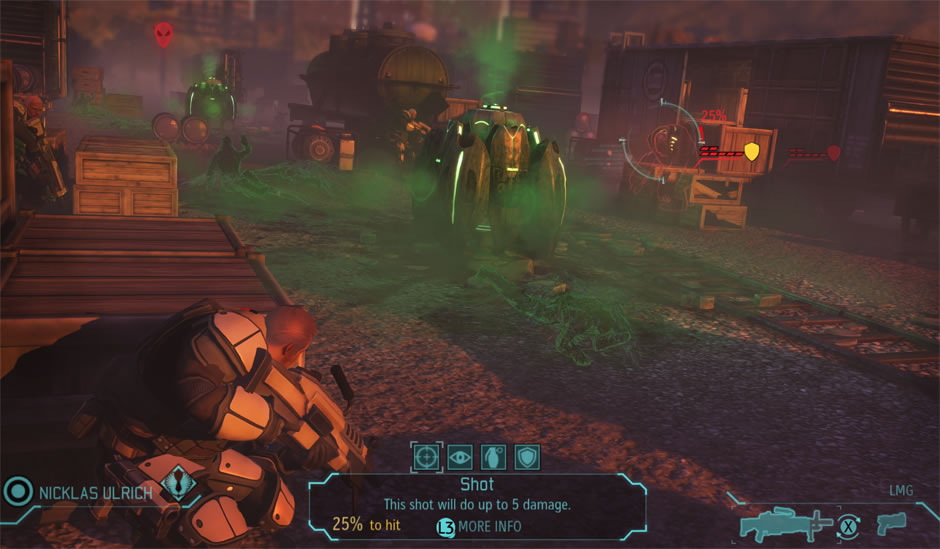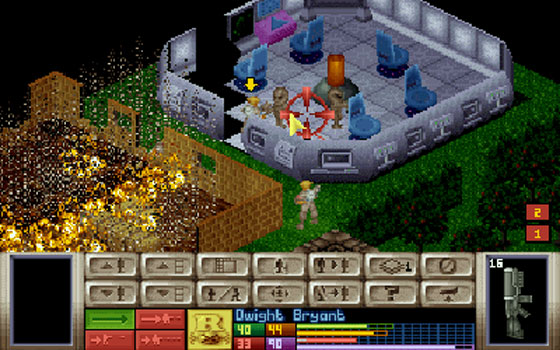X-COM vs. XCOM
Last week saw the release of one of the most-anticipated games of 2012 — Firaxis’ XCOM: Enemy Unknown for PC, XBox 360 and Playstation 3.
I didn’t say much when it hit the shelves, mostly because I wanted to try it for myself before weighing in. This is because XCOM is a fairly daring sort of project: a revisiting of one of the most well-loved and important titles in the history of computer gaming, 1994’s X-COM. Even today, nearly 20 years after it first came out, people still play the original X-COM and hold it up as a singular achievement; which puts the idea of a remake, in terms of ambition, something like a modern filmmaker mounting a 3-D production of Citizen Kane.
The good news is that Firaxis’ XCOM is a game worthy of the name. I’m not sure it’s worth writing a full review here, since the Internet is full of glowing reviews of this game already. But if you absolutely must have a review from me, here you go:
JASON’S EXTENSIVE, DETAILED REVIEW OF XCOM: ENEMY UNKNOWN
It’s a very good game; you should buy it.
Now that that’s out of the way, I’ll move a long to a subject that’s more interesting, at least to me: the design differences between today’s XCOM and the original X-COM.
If you never played the original — wait, what? You never played one of the greatest games ever? Well, you can fix that — it’s available for around $5 on various digital download services, including Steam and Gamersgate.
Now, where was I? Oh, right. If you never played the original, here’s a brief rundown of the story, which the new one (mostly) preserves. Earth is invaded by armies of strange extraterrestrial beings who seem bent on exterminating humanity. The nations of the world put aside their differences and form a global defense force, called X-COM, to battle the aliens. You play as the commander of X-COM, leading your soldiers through battles with the aliens around the world. Earth’s forces start out desperately outmatched by the aliens’ advanced technologies, so you have to use your wits to keep your troops alive long enough to capture examples of those technologies, which (with research) you can eventually turn into new weapons and defenses for your own forces. Once you have mastered the aliens’ tools, you can use them to mount a counteroffensive with the aim of ending the alien threat once and for all.
The fame of the original game came from the way it blended several different genres of game into a seamless, unified whole. One minute you’d be thinking at the highest strategic level, planning which of Earth’s continents to build a new complex of defense sites on; a few minutes later, you’d be deciding whether an individual soldier should dash into a darkened building by herself or wait for her teammates to arrive and back her up.
The new XCOM holds on to this feeling, but with some differences. The biggest is that the game has been streamlined to appeal to a broader audience. The original gave you an incredible level of control over every aspect of X-COM’s fight against the aliens; the new version takes some of those tools away, but they’re not really missed, because the most important ones are still there. You still have to decide what weapons to kit your soldiers out with, but you no longer have to buy individual hand grenades and ammo clips. The management that’s been removed is mostly micro-management, in other words, which isn’t a particular loss.
The same streamlining is visible in the tactical battles you lead your squads of soldiers against the aliens in. In the original X-COM, your team could have more than a dozen soldiers and the battlefields were large and sprawling. This gave the battles an epic feel, but at a cost: large teams meant lots of time spent ordering each soldier around, and large maps meant that battles could sometimes devolve into boring “bug hunts” where you had to scour every hedge and shed to find and kill the last alien on the map. In the new game, you can only have six troopers maximum on a given squad, and the maps are smaller and reoriented so that it’s always clear what general direction the overall objective of the mission is in. I had worries that this would subtract tension from the battles, but in practice it does not; it just means that they play through faster, and that you come to focus more on the few soldiers you have, learning their skills and drawbacks, instead of just pushing groups around the field like cannon fodder.
Being a product of its time, the original X-COM is not exactly user friendly; you’d be hard pressed to learn how to play without a copy of the manual, and even then the interface is a bit cryptic. The new XCOM simplifies the interface and adds a story-driven tutorial that teaches you the basics of the game while you play it. The simplification of the interface has been controversial; some have found that it’s been so simplified that the game actually plays better with a console controller than with the traditional mouse and keyboard. I’ve been playing with mouse and keyboard on the PC and haven’t found doing so to be particularly awkward, however. (If you’re a console gamer, this means you can pick up XCOM for your XBox and be comfortable that it’ll be easy to play, which is nice.)
Another controversial decision by Firaxis was tweaking the game’s difficulty levels. The original X-COM was famously unforgiving, almost brutal; missions would frequently collapse into bloodbaths, with the aliens massacring your troops as you clicked frantically to try and get the survivors back to the transport plane. Firaxis’ XCOM offers four difficulty levels: Easy, Normal, Classic, and Impossible. I’ve only played so far on Normal and Classic.
Classic is exactly what it says on the tin: the original, blood-soaked X-COM experience. In Classic mode, your soldiers get killed, a lot. Hardly a mission goes by without at least one or two casualties, and sometimes entire squads go out and never come back. It’s challenging, but difficult. Normal is significantly easier, especially if you’ve got experience playing the original. (At first I thought Normal was too easy, but then I got overconfident and sent a squad off to raid an alien base without only the most basic weapons, only to see them get absolutely slaughtered.) If there’s a complaint to be made here, it’s that there probably should be a level between Normal and Classic; but that’s small beer.
And really, that’s what the few complaints I have about the new game boil down to: small beer. XCOM gets so many things right that the few things it doesn’t feel insignificant in comparison. Which is sort of a small miracle, when you think about it. There are so many ways Firaxis could have fucked this game up — but they didn’t. They avoided them all. Somehow they managed to create something that, while noticeably different from the original, still provides tense, nerve-wracking battles; still shocks when you send a soldier around a dark corner to find an alien waiting there for them, ray gun at the ready; still breaks your heart when your best soldier, the one you’ve trained up from a raw rookie, stands and fires as extraterrestrial hordes bear down on her and you realize: this is it, this is the mission she’s not coming back from.
Still feels worthy, in other words, to call itself X-COM.



Comments
ControlFreak
November 3, 2012
2:28 pm
Yeah, totally disagree. Firaxis removed too much control. Deciding on how many rockets to load out your support troops with was fun, this game gives you ONE, ONE freaking rocket. Have fun with it. Grenades have been nerfed to being all but useless, as you see that your hulking muscle bound captain can only manage to toss the thing ten feet.
Perhaps most disappointing of all though was the removal of the real time clock and interception game. Nothing made the original feel more ‘real’ than playing in real time, at 2 in the morning, deciding when to scramble your jets, what intercept course to put them on, watching the radar blips creep closer together hoping they don’t run out of fuel. This has all been removed now and replaced with an extremely LAME automatic intercept mode, and an arcade-style display when you do intercept that is comical and embarrassing even compared to the very original xcom.
The graphics are better, and it’s fun lighting cars on fire to see them go BOOM, but really, why can’t no longer put points into specific attributes of my soldiers? When an experienced sniper draws scope on a muton who’s barely 20 feet away and sees he only has a 27% chance of a shot, there’s something wrong. Then said muton fires back with near 100% accuracy… FRUSTRATING!!!
All in all, I have not uninstalled this game yet, as it is a good game, BUT IT IS NOT XCOM. No Way, No How. It is something different, and something lesser, than the original, and other sequels recently out, that managed to hold on to. And THAT is very disappointing, considering the talent Firaxis assembled for this project.